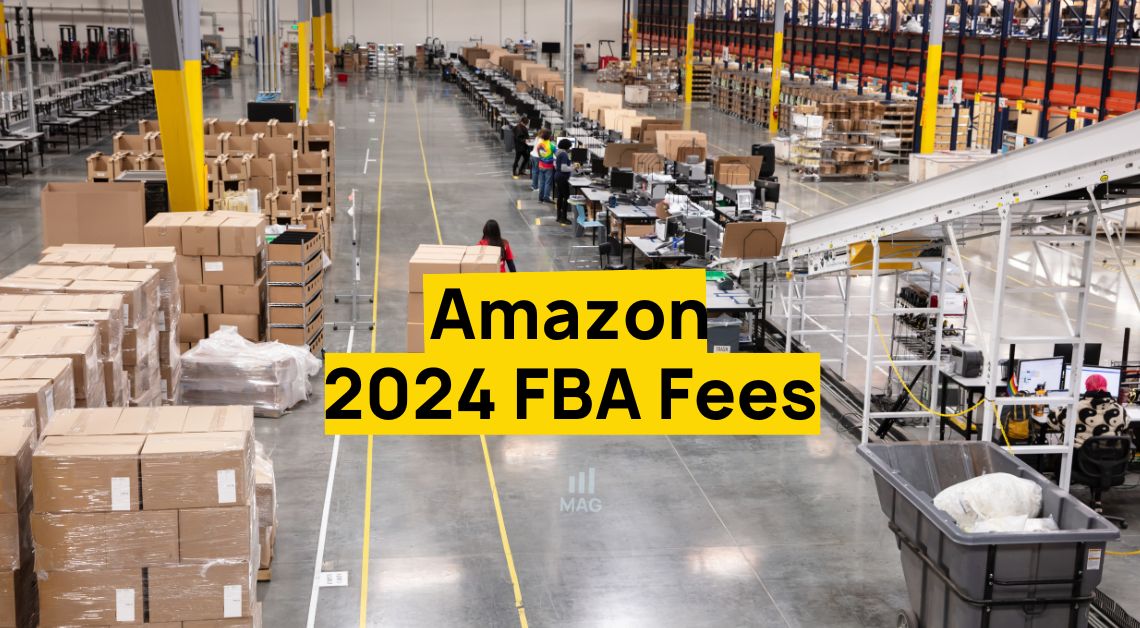As an Amazon seller, you know how important it is to manage your inventory effectively. Amazon Warehousing and Distribution (AWD) is a third-party logistics solution that can help you do just that. AWD provides cost-effective long-term upstream bulk inventory storage and replenishment to sales and distribution channels. In this blog post, we will discuss the benefits and limitations of AWD and provide guidance on whether it is right for business owners who sell on Amazon.
AWD offers many benefits, such as exemption from seller storage quantity limits within FBA, increased chances of winning the buy box, full control over inventory management, flexible pricing structures, multi-channel fulfillment, and auto-replenishments and master case handling. With these benefits, AWD can help streamline your inventory management process and improve your sales.
Benefits of Amazon Warehousing and Distribution
Amazon Warehousing and Distribution (AWD) offers a range of benefits to business owners who sell on Amazon. Here are some of the most significant advantages:
- Exemption from seller storage quantity limits within FBA: One of the most significant benefits of AWD is that it allows sellers to store an unlimited amount of inventory, bypassing the limits imposed by FBA. This can be particularly useful for businesses that deal with large amounts of inventory and need a cost-effective way to store it.
- Increased chances of winning the buy box: AWD also offers sellers a greater chance of winning the buy box, as it ensures that products are always in stock and available for customers to purchase. This can lead to increased sales and revenue for the seller.
- Full control over inventory management: With AWD, sellers have complete control over their inventory management, including when and how inventory is replenished. This can help businesses to streamline their operations and reduce costs.
- Flexible pricing structures: AWD offers flexible pricing structures, allowing businesses to tailor their storage and fulfillment costs to their specific needs. This can be particularly useful for businesses that have seasonal fluctuations in inventory or sales.
- Multi-channel fulfillment: AWD also provides multi-channel fulfillment, allowing businesses to distribute their inventory to multiple sales and distribution channels. This can be particularly useful for businesses that sell on multiple ecommerce platforms, as it simplifies the process of managing inventory across different channels.
- Auto-replenishments and master case handling: Finally, AWD offers auto-replenishments and master case handling, which can help businesses to save time and reduce costs by automating the process of replenishing inventory and managing master cases.
Overall, AWD offers a range of benefits that can help businesses to streamline their operations, reduce costs, and increase sales and revenue.
Limitations of Amazon Warehousing and Distribution
While there are several benefits to using Amazon Warehousing and Distribution (AWD), it’s important to consider the limitations as well. Here are some potential limitations of AWD that business owners should be aware of:
- Cost of storage and fulfillment: One of the biggest limitations of AWD is the cost. While AWD can be cost-effective for long-term storage, it may not be the best option for businesses that have a small amount of inventory or that sell low-priced items. Additionally, AWD charges fees for both storage and fulfillment, which can add up quickly.
- Limited access to certain FBA features: AWD does not provide access to all of the features available to FBA sellers. For example, AWD does not offer the Small and Light program or the ability to sell products internationally. If a business relies heavily on these features, AWD may not be the best option.
- Longer lead times for inventory replenishment: AWD is designed for businesses that have a steady and predictable demand for their products. As a result, the lead times for replenishing inventory can be longer than those for FBA. This means that businesses using AWD need to plan their inventory levels carefully to avoid running out of stock.
To mitigate these limitations, businesses can take a few steps. For example:
- Compare the costs of AWD to other fulfillment options to determine if it’s the most cost-effective solution for your business.
- Consider using both FBA and AWD to take advantage of the benefits of both programs.
- Plan inventory levels carefully to ensure that stock doesn’t run out, especially during peak sales periods.
By understanding the limitations of AWD and taking steps to mitigate them, businesses can make the most of the benefits of the program.
Is Amazon Warehousing and Distribution Right for Your Business?
Whether AWD is right for your business depends on several factors, including the volume of inventory you have, your sales volume, the cost of storage and fulfillment, and other sales and distribution channels you use.
If you have a large volume of inventory and sales, AWD may be a good option for consolidating your inventory and distributing to multiple channels. If you have a smaller volume of inventory and sales, you may be better off using FBA or another fulfillment option.
To determine whether AWD is right for your business, consider the costs and benefits carefully and weigh them against your business goals.
In conclusion, Amazon Warehousing and Distribution can be a valuable solution for Amazon sellers who want to consolidate inventory and distribute to multiple channels. While there are limitations to consider, the benefits of AWD, such as exemption from seller storage quantity limits within FBA, increased chances of winning the buy box, full control over inventory management, flexible pricing structures, multi-channel fulfillment, and auto-replenishments and master case handling, can help streamline your inventory management process and improve your sales.
If you’re interested in learning more about AWD or signing up for the program, take the time to research and consider whether it’s right









